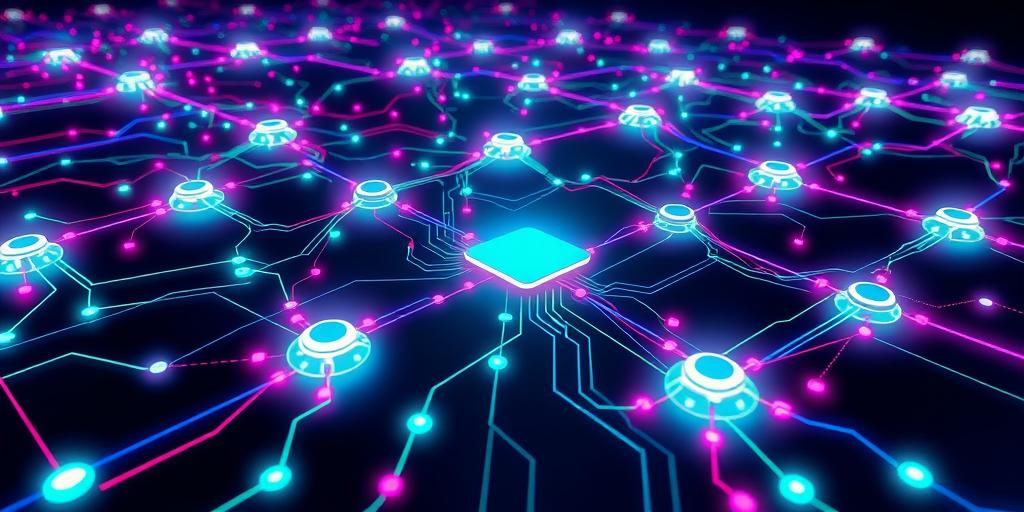The energy sector is undergoing a massive digital transformation. From smart grids to renewable energy integration, the changes are rapid and far-reaching. But what’s next? What innovations will reshape this critical industry in the coming years? Get ready to be amazed as we explore the cutting-edge technologies and trends poised to redefine the energy landscape! This isn’t your grandpappy’s power grid anymore; prepare for a future powered by data, AI, and sustainable practices.
The Rise of Artificial Intelligence in Energy Management
Artificial intelligence (AI) is no longer a futuristic concept; it’s a powerful tool rapidly transforming various sectors, and the energy industry is no exception. AI algorithms are being deployed to optimize energy production, distribution, and consumption. Imagine a smart grid that anticipates energy demands and automatically adjusts power output to meet those needs, preventing blackouts and reducing waste. That’s the power of predictive maintenance powered by AI!
Predictive Maintenance and Anomaly Detection
Predictive maintenance, using AI to anticipate equipment failures, is a game-changer. AI algorithms can analyze data from sensors on power generation equipment, detecting anomalies that signal impending problems. This allows for proactive repairs, minimizing downtime and reducing maintenance costs. This is more than just cost savings; it also ensures energy reliability and prevents potential disruptions.
Optimizing Renewable Energy Integration
Integrating renewable energy sources, like solar and wind, into the grid presents unique challenges. AI can help to predict the intermittent nature of renewable energy, optimizing energy storage and distribution to ensure a stable energy supply. Smart algorithms can analyze weather patterns and energy demand forecasts, optimizing the balance between renewable and traditional energy sources in real time. This ensures a cleaner, more reliable, and efficient energy future for all.
Blockchain Technology: Enhancing Energy Trading and Grid Security
Blockchain technology, the same technology behind cryptocurrencies, is revolutionizing energy trading and grid security. Blockchain’s decentralized and transparent nature creates a secure and efficient system for tracking energy transactions, making it near-impossible to tamper with data. This improved security translates to less fraud and enhanced grid resilience. This is more than just a technology upgrade; it’s a paradigm shift in how we manage and trust our energy systems.
Decentralized Energy Markets
Blockchain allows for the creation of peer-to-peer energy trading platforms. Consumers can buy and sell energy directly from each other, reducing reliance on centralized utilities and encouraging renewable energy adoption. This increased consumer empowerment is essential for the future of clean and equitable energy distribution.
Smart Contracts and Automated Payments
Smart contracts, self-executing contracts written in code, can automate energy transactions on the blockchain. These contracts ensure timely and secure payments between energy producers and consumers, increasing efficiency and eliminating the need for intermediaries. This reduces transaction costs and streamlines the entire energy trading process, making it smoother and more transparent for everyone involved.
The Internet of Things (IoT) and Smart Grids
The Internet of Things (IoT) connects various devices and systems through the internet, allowing for real-time monitoring and control. In the energy sector, IoT is instrumental in creating smart grids. These grids use sensors and data analytics to optimize energy distribution and consumption, resulting in greater efficiency and reduced waste. It’s a sophisticated network designed for maximum impact and minimum environmental footprint.
Real-time Monitoring and Control
IoT sensors placed throughout the grid provide real-time data on energy flow, voltage levels, and equipment status. This data is used to optimize grid performance, identify potential problems, and proactively address issues before they escalate into major outages. This proactive approach is crucial for maintaining a reliable energy supply and preventing costly disruptions.
Enhanced Grid Resilience and Stability
By integrating data from various sources, smart grids can respond to changing energy demands and weather events more effectively. This improves grid resilience and stability, making the energy supply less vulnerable to disruptions. This is critical for ensuring the energy security of communities and preventing widespread blackouts.
The Future of Energy: A Sustainable and Digitalized Power Grid
The future of energy is undoubtedly intertwined with digital technologies. AI, blockchain, and IoT are not just buzzwords; they’re the tools that will power a more sustainable, efficient, and secure energy future. By embracing these innovations, the energy sector can address climate change, enhance energy security, and provide reliable and affordable energy to all. The journey towards a truly sustainable energy system is underway, and the future is brighter than ever.
Ready to be part of the energy revolution? Learn more about the latest advancements in digital energy solutions and how you can contribute to a more sustainable tomorrow!




